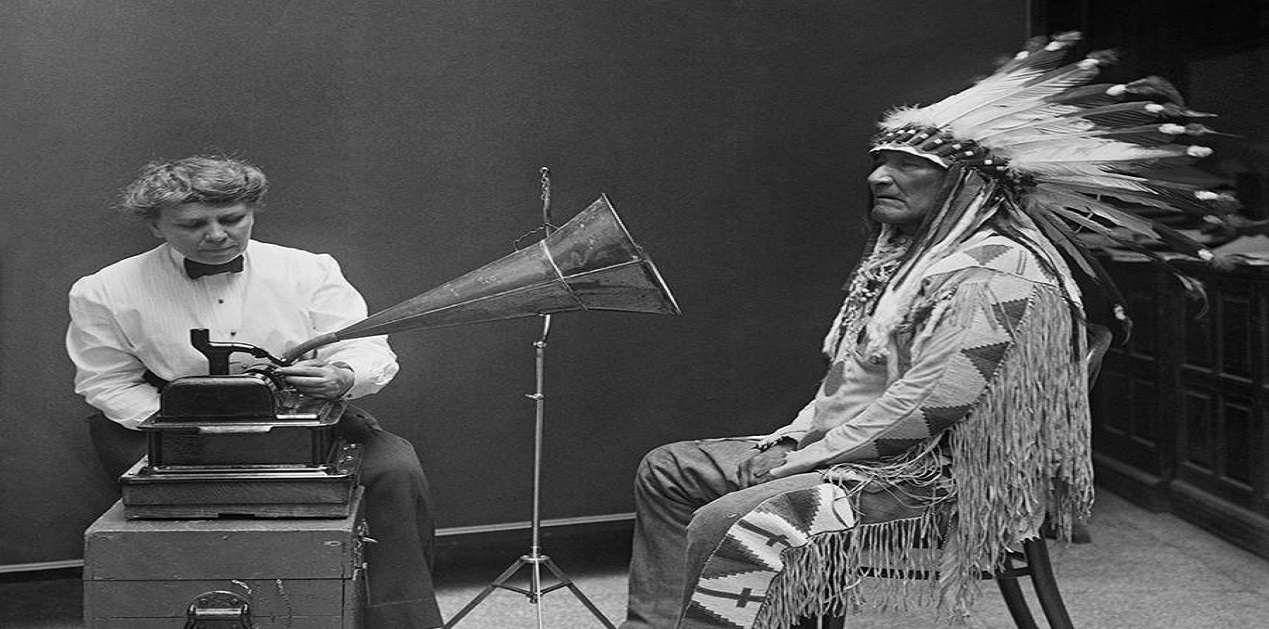The Vatican recently disowned the ‘Doctrine of Discovery’ that it was associated with for several centuries. This comes a year after the much-discussed apology of the Pope to the indigenous Canadian population. The Vatican has only renounced the Doctrine (and not rescinded it), and the statement doesn’t have legal significance to bring any changes to the existing native communities affected by the Doctrine. A passive reading of the Vatican statement tells us that it merely washes off the responsibility of the Church from the ‘doctrine of discovery’. However, this move has merited a glorified reception from organisations like the UN calling it “an important step towards reconciliation and healing…by rejecting concepts that fail to recognise their (indigenous peoples) inherent human rights.” Coincidentally, a month later, the UN hosted the Global Gathering of Indigenous Leaders, the largest of its kind.[1]
It is often assumed that such developments are less relevant in countries like India and hence less discussed. As if the ‘doctrine of discovery’ and its outcomes only pertain to native populations of Western lands like American Red Indians or Maoris. This is a misconception due to which we lose sight of the larger relationship between the Doctrine and colonialism and the subsequent global influence of the West. It is however, important to unravel the Indian connection to the Doctrine and its likely future implications.
Q.1) What is the Doctrine of Discovery?
The ‘doctrine of discovery’ traces its origin to ‘Papal Bulls’ issued by the Pope, which legitimised or authorised different European powers to conquer the lands of ‘non-Christians’.[2] These Papal Bulls or decrees dating to the 15th century are considered central to the history of material and intellectual colonialism, slavery, exploitation of resources, ecological crisis, and decline of traditions and tribal populations. Riding on this Doctrine, Christendom was created in the aftermath of an “age of discovery” beneath which lay the worldwide plurality of cultures, in Africa, the Americas, and beyond. Some international and property laws today are still based on the ‘Doctrine of Discovery’.
The Vatican now holds that these Papal Bulls, which were implemented by monarchies, were also ‘manipulated’ by them. However, the theological origin of the idea of ‘discovery’ is indisputable. The possibility of having the idea of discovery outside the cultural context set by ‘religion’ or Christian theology is theoretically impossible.
2) How is it related to the construction of the term ‘Adivasi’?
The word Adivasi sounds like a terminology of Sanskrit origin. However, its origin lies outside India in the ‘Doctrine of Discovery’. It is a literal translation of the word aboriginal or primitive, which was reproduced in British and Missionary accounts of Indian society. Embedded in such terminologies is a subtle way of looking down upon these cultures based on the experience of the coloniser which in turn is guided by the Doctrine of Discovery. So, the belief in the Doctrine becomes fundamental to making sense of the term ‘adivasi’ or the aboriginal. It is the self-assumption of the ‘discoverer’ to be progressive, civilised and eligible to curiously ‘discover’ a community, which is placed in the beginning of a linear scale of civilisational progress.
Without much reflection, Indians have inherited the term ‘adivasi’. At the time of the framing of the Indian constitution, the Constituent Assembly debates witnessed members speaking about communities belonging to ‘scheduled’ categories as opposed to the ‘caste Hindus’ as if it were a relationship between the aborigine and his foreign discoverer. For instance, S. Nagappa of Madras argued that
“We, the Harijans and Adivasis are the real sons of the soil, and we have every right to frame the constitution of this country. Even the so-called Caste Hindus who are not real Indians, can go, if they want….today we are asking the Britisher to quit. For what reason?......We ask him to quit because he is a foreigner…………we have also a right to ask the Aryan, the migrator, to go. We have a right to ask the Mohammedan, the invader, to go out of this country. There is only one consideration. The caste Hindus of this country do not have any other place to go to. That is the only consideration that they deserve.”[3]
Even to this day terms like ‘Vanavasi’ and ‘Adivasi’ are contested by each other.[4] The former term is alleged to indicate a ‘Hinduisation’ of the tribals. For instance, the CPI (M) policy document on the tribal question says the following; “It (RSS) refuses to recognise the tribal people as "adivasis" which means original people and terms them as "vanavasis" which confines the tribal people solely to the forests. By this, they negate history. Many of the adivasis today are descendants of those who were driven out of the fertile plains into the hills and forests by successive waves of settlers centuries ago.”[5]
According to this view, the aboriginal people were forcefully driven to forests by a different group who came from outside. Firstly, in a subtle way, it condemns the forest life as backward as opposed to the life in ‘fertile plains’. It presents forests as a dark place to which people are driven into to suffer. Such views merely re-affirm the colonial narrative of progress and the catch-development model, the ultimate end of which is Westernisation. Secondly, this story is merely a recreation of the Native American predicament. By simply creating parallel versions of European history in India, such popular narratives ignore the lived reality of tribal traditions, which in fact, embraces forest life and their way of being.
3) Would replacing the term ‘Adivasi’ with ‘Vanavasi’ solve the problem?
To settle the debate over ‘adivasi’ and ‘vanavasi’, the Chairman of National Commission for Scheduled Tribes (NCST) said the debate is meaningless since the constitution refers to tribal people as Scheduled Tribes.[6] However, the route to depending on the constitution to settle the conceptual debate may not end this problem. The word tribe itself is not self-descriptive or vague and could be described or interpreted in multiple ways. Therefore, such debates on how to understand Indian communities will persist. An attempt to describe, classify and put every forest living tradition of India under one basket is an impossible task. In other words, scientifically defining all Indian ‘tribal’ traditions under one conceptual framework will also eventually run into fallacies. Merely changing the term we use to refer to them may not be a solution for the mental attitude that people carry forward in their outlook towards such communities due to the inherited colonial consciousness.
One good way to overcome this predicament would be by knowing the similarities between the European experience of Indian tribal communities and our contemporary descriptions of the same. When Europeans came to India, the impression they made of Indian society was based on certain cultural experiences of the Europeans themselves. Since their ways of understanding have become the mainstream, there is a double task of knowing the Western culture as a prerequisite for understanding Indian tribal communities and traditions.
4) What are the implications of the Vatican's new position for India?
Generally, it is assumed that such developments would hardly impact non-Western lands like India. As mentioned above, if the ‘doctrine of discovery’ is directly related to the construction of terms like ‘Adivasi’, which has gained currency in India’s politics and law-making process, the disownment of the same by the Vatican would also have its own implications.
Firstly, the decision by the Vatican is intended to foster a renewed dialogue between the Church and indigenous/tribal communities worldwide, including countries like India. How such initiatives will unfold is something to wait and watch.
Secondly, the ‘doctrine of discovery’ is now disassociated from a Christian theological setting, and the UN has embraced the decision uncritically. This would eventually result in the evolution of a secular and universal narrative on ‘discovery’. Such a narrative could impose parallel stories of ‘discovery’ and indigenous subjugation on non-Western lands. It may so happen that the population in India classified as ‘tribes’ could be described as people who were discovered by the other population who came as ‘settlers’. This would reinforce the previously accepted Orientalist classification of "Aryans" and "Dravidians", with the former having "discovered" the latter for enslavement. The narrative of this subjugation could then effectively be placed within the prism of the now-repudiated ‘doctrine of discovery’. Whereas earlier, since the ‘doctrine of discovery’ was strongly associated with Christian theology, the scope for such a narrative was nominal, as the ancient ‘Aryans’ were not Christian.
Thirdly, as mentioned earlier, the disownment of the Vatican would amount to ‘universalisation’ of the idea of discovery. Hence, the current Indian position at the United Nations Declaration on the Rights of Indigenous Peoples (UNDRIP) could get problematised. India voted for UNDRIP on the condition that post-independence, all Indians should be considered ‘indigenous’ or ‘native’ and so the UNDRIP does not apply to India.[7] Universalisation of the idea of discovery might problematise this position to give the ‘tribal’ population of India recognition along with the global indigenous group, like the Native Americans. In other words, the communities categorised by the Indian government as ‘scheduled tribes’ could now be seen among the supposedly ‘discovered’ communities. In coming times, this might foster rifts in India’s internal politics and influence the international perspective on India’s tribals.
References
[1] Joseph Lee, Grist “The Largest Global Gathering of Indigenous Leaders Begins Today at the UN. Here’s what you need to know”. Native News Online.
https://nativenewsonline.net/currents/the-largest-global-gathering-of-indigenous-leaders-begins-today-at-the-un-here-s-what-you-need-to-know ( Accessed 19 May 2023)
[2] For a brief summary see https://doctrineofdiscovery.org/ (Accessed 19May 2023). This educational resource is maintained by Indigenous Values Initiative and the American Indian Law Alliance.
[3]S.Nagappa (Madras: General), 2 CAD 284.
[4]See in, “Adivasi vs Vanavasi: The Hinduization of Tribals in India”. Outlook. https://www.outlookindia.com/website/story/adivasi-vs-vanvasi-the-hinduization-of-tribals-in-india/217974
(Accessed 19 May 2023)
[5]Communist Party of India (Marxist). “CPI (M) Policy Document on Tribal Question”.
https://cpim.org/content/cpim-policy-document-tribal-question(Accessed 19 May 2023)
[6]However, he also added that "The word vanvasi was being used before adivasi. The Britishers started using the word 'adivasi' to define indigenous communities. Vanvasi has been in use for a long time, even before the 'Ramayana kaal'” “Adivasi vs vanvasi: Constitution uses 'Scheduled Tribes' for tribals; debates futile, says NCST chairperson”. The Economic Times. https://economictimes.indiatimes.com/news/india/adivasi-vs-vanvasi-constitution-uses-scheduled-tribes-for-tribals-debates-futile-says-ncst-chairperson/articleshow/95782175.cms?from=mdr (Accessed 19 May, 2023)
[7] “Indigenous People India”. IWGIA https://www.iwgia.org/en/india.html#:~:text=India%20voted%20in%20favour%20of,the%20UNDRIP%2C%20applicable%20to%20India (Accessed 19 May 2023).
(The paper is the author’s individual scholastic articulation. The author certifies that the article/paper is original in content, unpublished and it has not been submitted for publication/web upload elsewhere, and that the facts and figures quoted are duly referenced, as needed, and are believed to be correct). (The paper does not necessarily represent the organisational stance... More >>
Image Source: https://magazine.columbia.edu/article/genius-work-how-franz-boas-created-field-cultural-anthropology











Post new comment